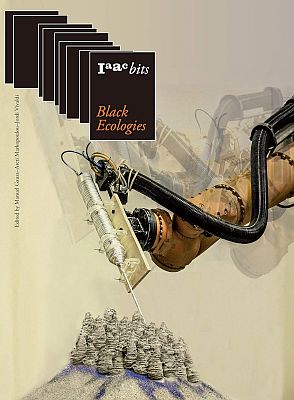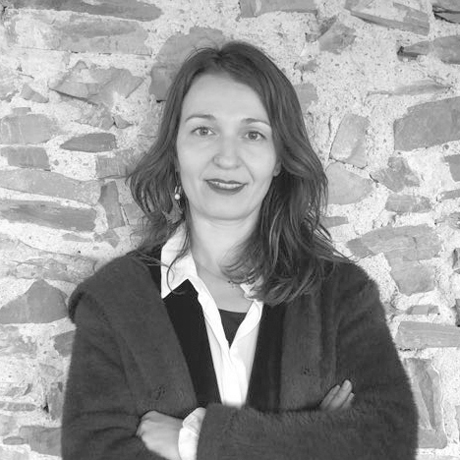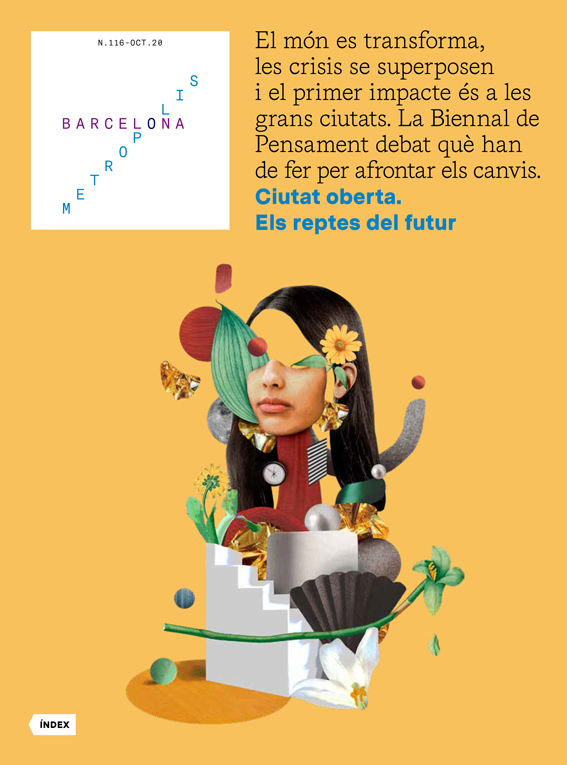Cities that learn from science: the response to a design crisis
Open city. The challenges of the future
- Dossier
- Oct 20
- 8 mins

COVID-19 has spread faster in dense urban areas, resulting in a higher mortality rate compared to rural areas. By drawing the diagram of the virus’s behaviour and its spread in cities, we realise that, besides a health crisis, what we are experiencing today is also a design crisis as regards the way we have planned and built our cities and homes.
The pandemic crisis that has turned the world upside down is much more than a health crisis. Overcrowded cities, the long-distance transport of people and goods, as well as a rise in patients with respiratory problems due to ambient or indoor pollution have been the underlying causes behind the exponential growth of the new virus. COVID-19 has travelled as fast as our consumer products move from one part of the world to another. And it has spread faster in dense cities, leading to a higher mortality rate compared to rural areas.
The high density of cities and the pursuit of the highest possible real estate profits, prioritised over the quality of the space, have also resulted in the existence of a large number of “sick” and overcrowded buildings. Households, homes and entire city blocks that lack adequate orientation, sun exposure and natural ventilation, trigger an additional effect to that of the virus: the deterioration of people’s mental and physical health on account of being confined and isolated in wholly interior and tiny homes. Nowadays, these types of buildings have become the norm in cities, which also seem designed to force their citizens (or products) to invest large amounts of time in reaching their destination, either by public or private transport. They are cities based on economies of scale whose production is often centralised in obsolete remote factories.
By drawing the diagram of the virus’s behaviour and its spread in cities, we realise that, besides a health crisis, what we are experiencing today is also a design crisis. The unforeseen health and social problems our world is confronted with today and the additional (possibly more serious) social and economic challenges that we will face during and after the recovery of health urge us to rethink and restructure many of the design traditions of buildings and of the city itself, as well as the foundations on which they have operated over recent decades. Rethinking design by combining it with multidisciplinary science to give precedence to citizens’ quality of life is a powerful way for architecture to innovate and, therefore, generate a change and a positive impact on the built environment and the society that inhabits it.
The current pandemic has shown us that relying on external systems is neither sustainable nor resilient. The built environment should be more self-sufficient in producing the resources it needs.
Biology and nature as a model
By learning from (synthetic) biology and from nature itself, architectural design can innovate by redefining the built environment and cities as living organisms; organisms that can filter the air, self-regulate their temperature or provide high levels of oxygen and quality ventilation. Considering that globally approximately seven million deaths per year are attributed to the joint effects of household and ambient air pollution, architectural design is called upon to redefine the energy performance of buildings and of the city and generate a positive change, not only in spatial quality but also in the physical well-being of their inhabitants.
There are more biological functions we can add to our built environment, such as the production of resources within a network of interconnected nodes. Buildings and cities can become fractals of hyper-connected cells, capable of producing and providing resources locally, such as food or energy, and distributing them between cells. The current pandemic has shown us that relying on external systems is neither sustainable nor resilient. The built environment should be more self-sufficient in producing the resources it needs and smarter in the way it uses its “by-products”, such as waste. Nature, for example, does not recognise the notion of “waste”; all products become resources so that another system can work and live. The productive built environment thus becomes a living system operating in a circular metabolism, driven by the principles of resource production, reuse and upcycling.
The commitment to natural and organic materials
Given the fact that our buildings today are the largest CO2 emitters and energy consumers, and that the construction sector is the biggest generator of waste in the world, architecture is urged to redefine the metabolism of buildings and cities. By learning from materials science, architectural design can foster the creation of healthier indoor environments by avoiding plastic, lead and other toxic materials traditionally used in interior construction. New or renewed bio, natural and organic compounds (including soil, biomass, ceramics and certain types of wood) can improve indoor air quality and reduce respiratory illnesses while contributing to passive cooling and heating, thereby mitigating the need to increase hermetically-sealed interiors which, in turn, can lead to the concentration of dust mites.
Instead of highly engineered synthetic materials, we must insist on a new paradigm for building materials derived from natural resources or created by organic waste streams, which can be transformed into new resources to create engineering products for construction and architecture that contribute to a new value chain where waste or organic content are the chief resources. We should also pay more attention to local artisans or communities of manufacturers and makers who are contributing to the creation of a variety of formulae and DIY (“do it yourself”) techniques to produce new recycled or natural and bio-based compounds. Boosted by open-source culture and the Internet, individuals and local communities can customise these new libraries of materials to build their own havens of “circular” products.
Algorithms and collective intelligence, tools for planning
Finally, we can learn from data science and the social sciences. Architectural design and urban analysis can integrate statistical models and algorithms to predict phenomena, including epidemics or natural disasters, among others. The Internet of Things, sensor technologies and mobile applications have become essential tools during the pandemic crisis to monitor, predict and prevent virus outbreaks. And they can also prevent other crises, such as the climate crisis. In a fast-paced digital society, the data collected from billions of devices and our digital fingerprints are the most valuable fuel for running the engines of sustainable planning.
But there is more to learn if we observe and analyse the intelligence embedded in the disorganised decisions of users in our built environment. By overlaying quantified data with qualitative data related to people’s wishes, we can plan solutions based on citizens’ real needs for our future urban environment. Therefore, we need to invest in collective intelligence design models that go beyond cognitive or artificial intelligence. The combination of big data, artificial intelligence and crowd intelligence opens up unique opportunities for human-centred planning and co-creation, and drives real-time adaptive design that help both people and resilience strategies in the environment in which they live.
Design and planning must ask the right questions to bring about a radical positive impact on the way we live and interact.
Now we are urged to change the notion of the materialisation, management and construction of our built environment. The concept of “durable and consuming buildings and cities” should give way to built spaces that produce, manage and reuse or transform resources, and that operate in symbiosis with their users and the environment. We are also called on to interpret the current health crisis as a design crisis, with creativity and innovation at the heart of our built environment and our cities. Today, the cities and buildings we plan and build shape their citizens and our society. Rather than exploring just strategies and technologies to predict outbreaks or to monitor society, design and planning may seek innovation, asking the right questions to bring about a radical positive impact on the way we live and interact today and, first and foremost, thinking about tomorrow.
Design and multidisciplinary technologies thus become allies in an unprecedented battle to redress the effects of the impact of our construction in a world that is in turn changing at rates never envisioned before.
References
Jacobs, J., The Death and Life of Great American Cities. Vintage, New York, 1992 (originally published in 1961). Spanish edition: Muerte y vida de las grandes ciudades. Capital Swing, 2011.
Surowiecki, J., The Wisdom of Crowds. Anchor, New York, 2005. Spanish edition: Cien mejor que uno. Urano, 2005.
Markopoulou A., Yuan P., “Design Integration: Global Technological Advancement and Local Culture” in Sheil B., Ramsgaard Thomsen M., Tamke M and Hanna S. (eds.) Design Transactions: Rethinking Information Modelling for a New Material Age. UCL Press, London, 2020 (pp. 92-98).
McDonough, W. and Braungart, M., Cradle to Cradle: Remaking the Way We Make Things. North Point Press, New York, 2002. Spanish edition: Cradle to cradle. Rediseñando la forma en que hacemos las cosas de la cuna a la cuna. McGraw-Hill, 2005.
Pauli, G., The Blue Economy: 10 Years, 100 Innovations, 100 Million Jobs. Paradigm Publications, Taos, 2010. Spanish edition: La economía azul / The Blue Economy: 10 años, 100 innovaciones, 100 millones de empleos. Tusquets, 2011.
Armstrong R., Soft Living Architecture, An Alternative View of Bio-informed Practice, Bloomsbury Visual Arts, London, 2018.
Gausa, M., Markopoulou, A., Vivaldi, J., Black Ecologies. Actar Publishers, Barcelona, 2020.
Digital resources
Ellen MacArthur Foundation 2012, “Towards the Circular Economy: an economic and business rationale for an accelerated transition” in Journal of Industrial Ecology, Isla de Wight, consulted on 4 February 2020, .
Directive 2010/31/EU of the European Parliament and of the Council on the energy performance of buildings, Official Journal of the European Union, Spanish version consulted on 4 February 2020.
Recommended publications
 Black Ecologies (IAAC Bits 9)Gausa, M; Markopoulou, A; Vivaldi, J. Actar, 2020
Black Ecologies (IAAC Bits 9)Gausa, M; Markopoulou, A; Vivaldi, J. Actar, 2020
The newsletter
Subscribe to our newsletter to keep up to date with Barcelona Metròpolis' new developments




